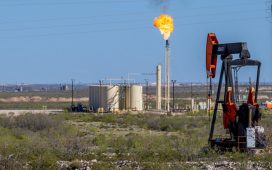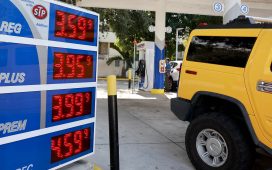Wesley Snipes attends the premiere of “Chi-Raq” at the Ziegfeld Theatre on Tuesday, Dec. 1, 2015, in New York. (Photo by Charles Sykes/Invision/AP) photo credit: Charles Sykes/Invision/AP
Wesley Snipes and Dawn’s Light Media are making a new casino heist film, “Payline,” that will be carbon neutral.
Hollywood usurps energy left and right on sets: from catering to energy-intensive equipment to sets that last for a mere few days, if not hours, sometimes.
Jason Cherubini, Chief Financial and Operating Officer at Dawn’s Light Media and the upcoming film’s producer along with Richard Switzer, says that the shift to a more eco-driven film set is not as daunting as it seems. “It just needs more thought, and careful organization in the lead up to the film.”
The biggest carbon footprint, he explains, comes from the sets themselves, which can be put up for a single shot and then blown up, as in the case of an action thriller, or destroyed. “We’re building things for one time use,” he adds.
That doesn’t have to be the case. The materials can be repurposed, recycled, given to local builders, and the initial setup itself can rely more heavily on existing sets.
Much of what Cherubini, Snipes, and the Payline crew are aspiring to do is not out of the ordinary. “It’s not industry secrets or something complex. We’re adopting a lot of what other industries have done, and bringing it to the film world. It just requires some additional effort,” Cherubini says, who came to film from a background in finance and renewable energy.
But it must cost more, right? Not by much, he estimates. “I would be surprised if these changes were more than 10 percent of the current costs.”
While the Producers Guild does have a “green” guide, so to speak, Cherubini says it doesn’t go far enough. That’s why Dawn Light Media hopes to amass this knowledge and create a more updated blueprint for the industry, which will encourage other producers and filmmakers to think more thoughtfully about the production process.
Though some changes can be made relatively easily, such as removing diesel generators from the set, others will require carbon offsets. Travel and transportation can be minimized to a certain degree to but the remainder will need to be offset with credits, Cherubini admits.
“But the vast majority of changes are minor changes. And if we can show them that it’s cost-effective, then more people in the industry are likely to do it.”
Cherubini was inspired by the crew behind Spiderman 3, who had put out a 5-minute video about how they had made more eco-friendly choices on set: bikes to get around, no single-use plastics, etc. That movie, however, came out in 2007, over a decade ago.
“We’re talking about really basic ideas, but that was the cutting edge of the time,” he says, cheekily. “Since then we’ve seen vendors take on more eco-friendly models, but we’ve not seen anyone take the all-inclusive approach, the soup-to-nuts.”
Wesley Snipes, he says, took interest in this model and the extra months needed to prep for this shoot, which made it a good marriage between Dawn’s Light Media and Snipes.
“This is a vehicle to demonstrate the next generation of indie filmmaking in a 5G powered world,” Snipes said in a statement. “It is our goal to show how a 100 percent Certified Renewable Energy film production can show love for the environment, community and still produce a kick-ass popcorn movie.”








